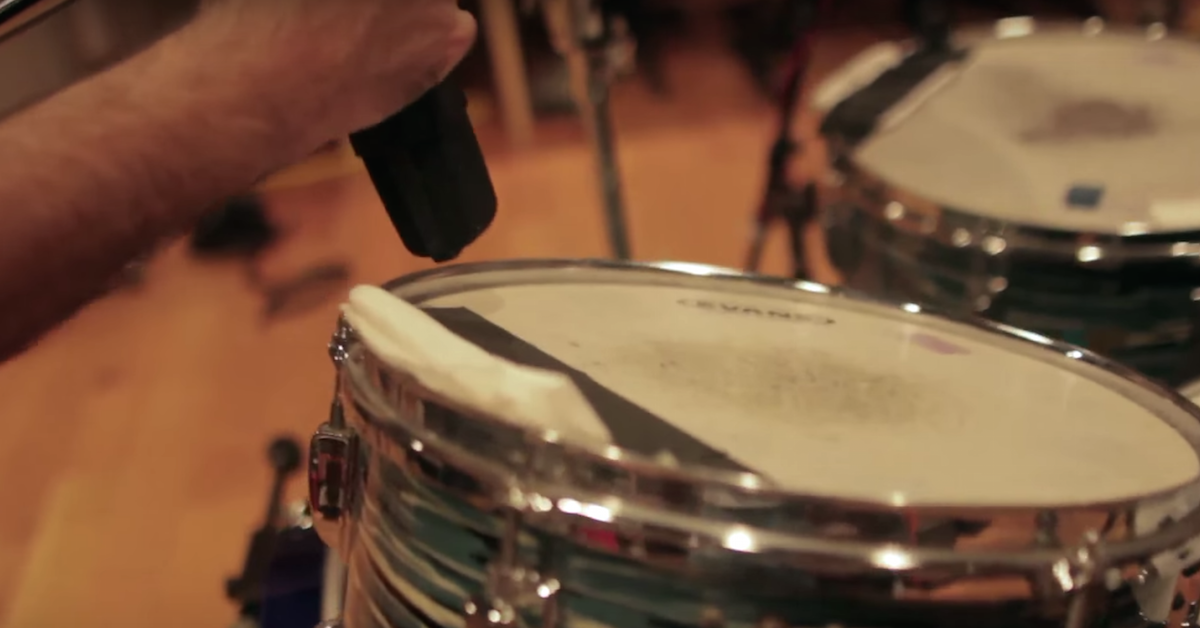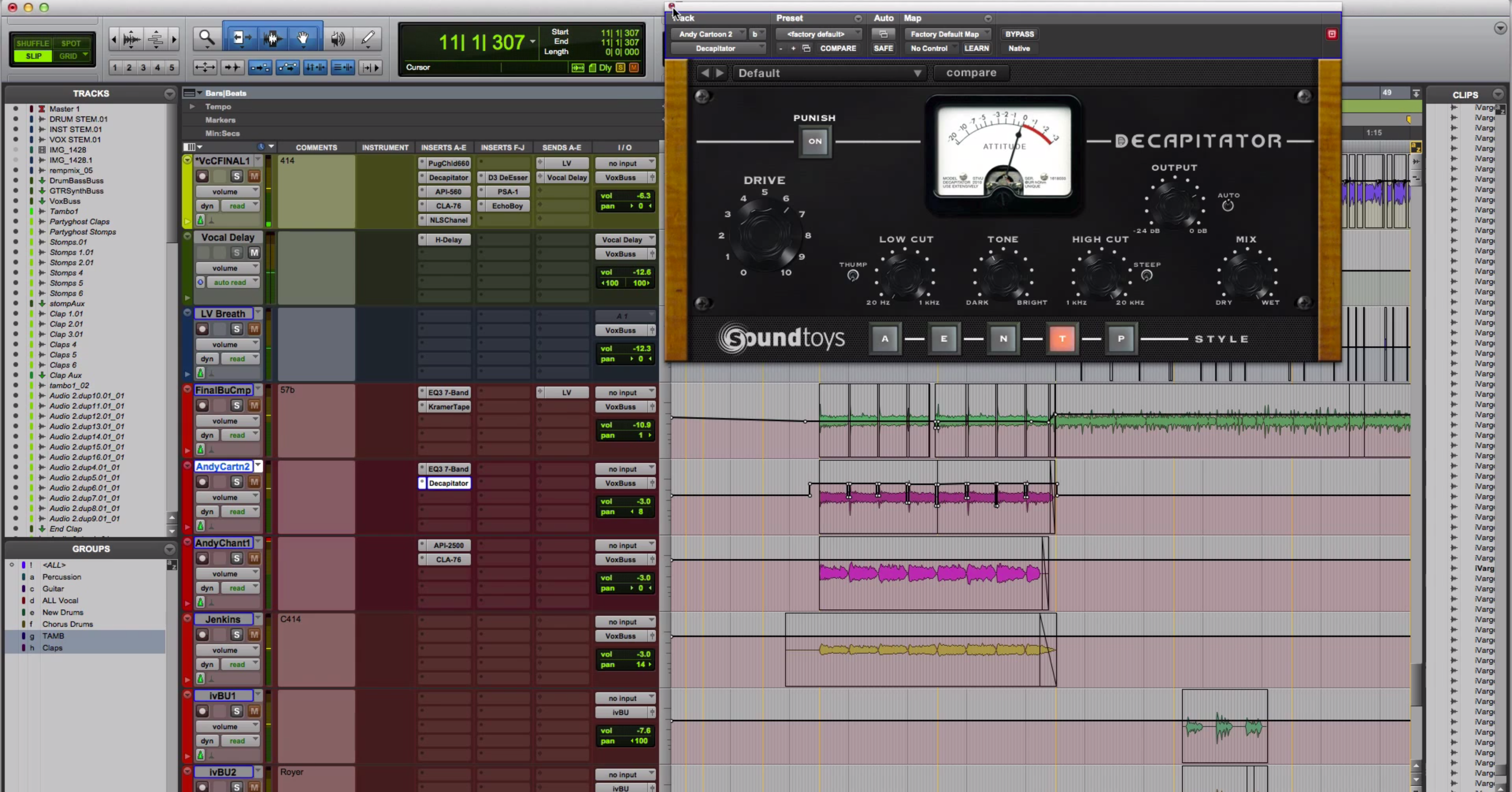Tips for Recording and Mixing Body Percussion
Article Content
Beatboxing, hand claps, breath noises, finger snaps, foot stomps, “hey’s & ha’s” — these are the various types of body percussion that can add a little extra sumpin’ sumpin’ to your record. Here’s a breakdown of a few ways to approach recording and mixing them.
1. Beatboxing
Beatboxing is the art of making drum sounds with your voice. I find there’s two ways to approach this.
One is the “hey, I’m beatboxing” way which is to capture the vocal as a traditional vocal. This is the Justin Timberlake style of beatboxing sounds.
A second way is to actually bring out the percussive power of the voice. For this I like to use a dynamic mic, usually a kick drum mic to add extra weight, and I place it very close to the vocalist’s mouth. From there I find that extreme EQ’ing can be very useful — narrow resonances, lots of top-end, lots of bottom, or whatever it needs really.
It’s not uncommon for me to be adding 12 dB plus top-end to a beatbox recording.
Hard compression can also be cool for this. Basically I’m trying to make the voice sound like real drums.
2. Hand Claps
There’s also a couple ways to interpret hand claps. The “in the room” sound, and the “Hip-Hop direct clap” approach.
In the room, I may use a spaced pair of cardioids five feet or so from the clap. If I want group claps, I want everyone clapping in the room at the same time and I’ll probably do a few passes and layer that up.
If I want the direct clap sound, I’m probably using one carefully aimed and positioned figure-8 mic.
The idea is that without the room, the clap has no sustain, but that same room sound is also what sinks the clap back into the stereo field. There’s usually a sweet spot around 3-5 feet from the clap. Here I’m usually using a ribbon mic, and choosing the specific one very carefully. Ribbons tend to have uniquely shaped top-end responses. I’ll get to why that’s important in a minute.
The processing for natural sounding claps is fairly straightforward. A bit of compression, and if necessary, some EQ to even out the sound — possibly add some low end or treble depending on the mix.
Panning the various layers to different positions can sound cool as well.
For direct claps I’m doing some pretty extreme processing. First, I’m probably going head first into a limiter. The beef of a hand clap exists within about a couple milliseconds right between the attack and the room sound, so squashing the beejeezus out of it can sometimes sound pretty good.
I tend to also be boosting a lot of high-end into the limiter. I find the unique texture of a ribbon mic is great for adding character to a hand clap. I’d rather get a darker ribbon with a lot of character and EQ it up then use a smooth sounding condenser with natural brightness.
Finger snaps work in a similar fashion. The key difference is that the projection of a finger snap is shorter than a hand clap, so the mics need to be a bit closer.
3. Breath Noises
Breathe into the mic. Filter out the low-end and adjust the midrange accordingly.
This one ain’t rocket science.
4. Foot Stomps
The absolute best foot stomps come from using a sounding board like the ones found in a foley studio. That said, just using a drum riser or even the studio floor can work.
For an “in the room” kind of sound, it’s cardioid condensers all the way.
For a direct sound, think of the floor like a kick drum. D112/SM7/RE20 etc., just off-center of the surface tends to work well.
The exception here is if you are literally using the studio floor. For that, there’s too much tension to get a good sound from the center, so you’re better off using a condenser closer to where the foot is actually hitting the ground. Just be careful no one kicks it.
For processing, foot stomps tend to benefit from some sculpting and boosting in the low-end, as well as some focusing in the 400-800 Hz range where the knocky overtones show up.
Compression can also be a good weapon here to bring up the “boom” sound of the stomp.
5. Hey’s and Ha’s
“Hey’s” and “Ha’s” can be great for adding ear candy or front-to-back imaging to a record.
For the former, I find a single “hey” with distortion and/or telephonic filtering panned out from the center with a touch of reverb or delay can add a lot to some records.
For the latter, setting a reverb return with almost none of the dry sound can really help create a far “back wall” and define the space.
Obviously, if you’re looking for the natural space of the room, just mic the “hey” from far away.
The exception here is that in Trap style Hip-Hop records, a group “hey” is meant to work like drums. So I mix those more forward. I’ll hard gate the tail of the “hey” and then hard compress the signal to bring out the body.
Conclusion
Body noises are an often overlooked way of adding interest to a record.
Whether the noises are meant to be features or just subtly add ear candy there are a lot of good options to choose from.
And the best part is, you don’t need an instrument to make it happen — you always have a hand clap just an arms length away (ha ha ha … no … not funny? ok.)





